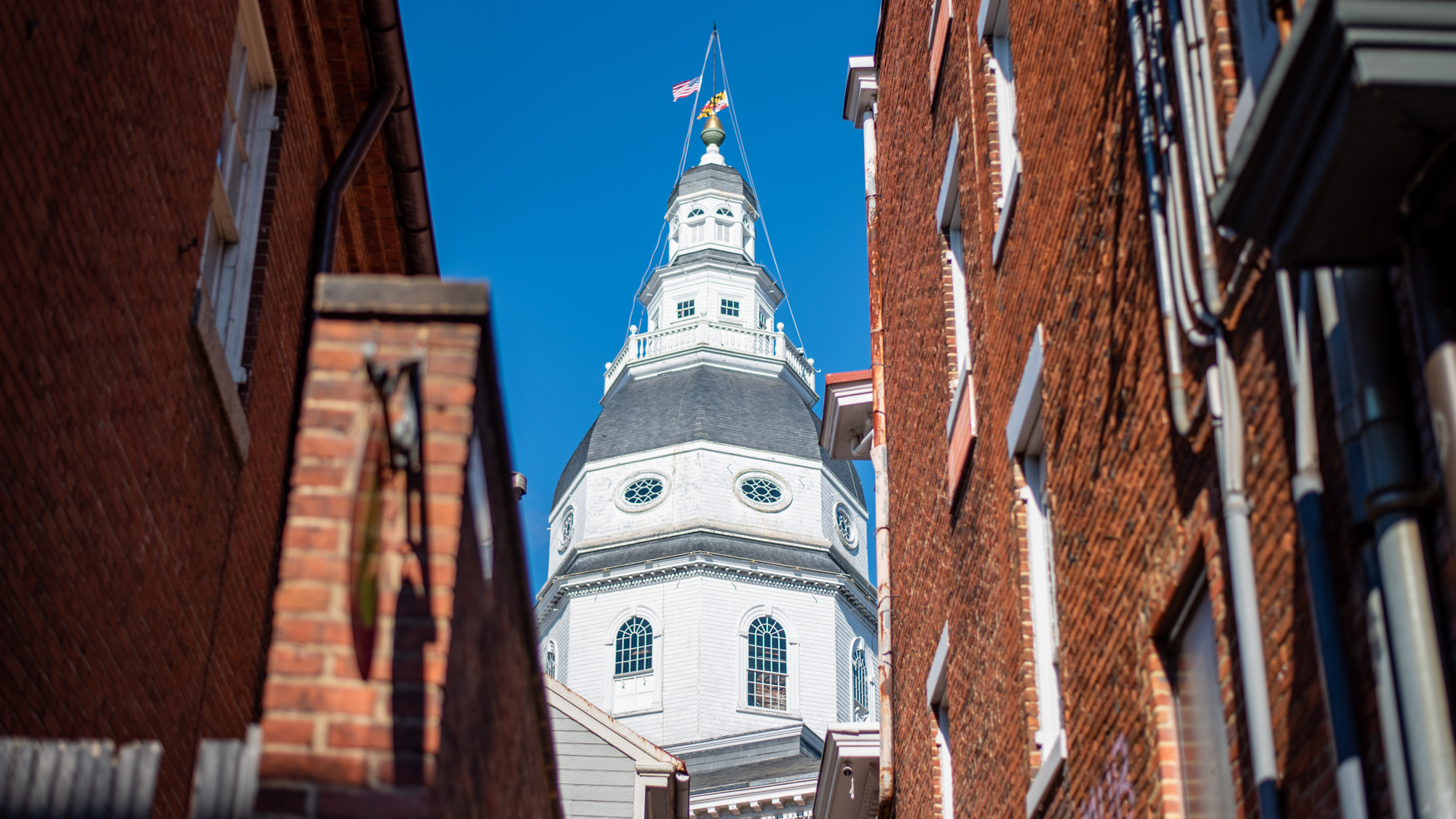In the first month of its 2022 legislative session, the Maryland General Assembly has addressed bills on legalizing recreational marijuana and addressing climate change. It has also debated a once-in-a-decade redistricting map.
Here’s a look at some of the biggest talking points of this year’s legislative session.
Legalizing Recreational Marijuana
Lawmakers are contemplating whether to add a ballot referendum this November, legalizing recreational marijuana.
Maryland’s legislature would amend the state constitution legalizing marijuana usage for adults over the age of 21 if the referendum is successful, according to Forbes. The General Assembly would still need to set laws for the use, distribution, possession, regulation and taxation of marijuana as part of a bill for the proposed amendment.
If the legislature passed this, the referendum would ask voters, “Do you favor the legalization of adult-use cannabis in the State of Maryland?”
Three-fifths of both the House of Delegates and state Senate must approve the question to make it onto the ballot this fall.
The chair of the state’s House Cannabis Referendum and Legalization Workgroup Del. Luke Clippinger (D-Baltimore City) introduced the proposed bill last month.
[Grad students’ collective bargaining bill divides UMD]
The chair of the Maryland Legislative Black Caucus Del. Darryl Barnes believes the tax dollars raised from legal sales of cannabis should be invested back into communities of color disproportionately affected by prohibition. Black Maryland residents are much more likely than white Maryland residents to be arrested for cannabis possession, according to a 2021 Department of Legislative Services Racial and Equity Impact Note.
“Any legalization measure in Maryland must also seek to repair the past harms prohibition has caused — particularly in communities of color,” the Prince George’s County Democrat wrote in a Jan. 28 opinion piece for The Washington Post. “The time to replace the devastating war on cannabis with comprehensive, equitable legislation is now.”
A Push for Climate Justice and Sustainable Energy
Another piece of legislation that could show up on the ballot this November is a proposed “climate justice amendment” sponsored by Del. Wanika Fisher (D-Prince George’s County).
The amendment would guarantee Marylanders the “right to a healthy environment” under the constitution. Both chambers must pass the bill and recieve voter approval this November.
“This legislation is vital to protect vulnerable communities,” Fisher wrote on Twitter in advance of this year’s legislative session.
Lawmakers will also take up a revised version of the Climate Solutions Now Act.
The Senate bill places a heavy emphasis on promoting electrification. Provisions would require all new buildings in the state to be electric by 2024 and existing buildings to be net carbon neutral by 2040. Fees would be enforced on any building that fails to meet these standards, according to Maryland Matters.
The revised legislation will also emphasize the role of school buildings in energy efficiency. The Senate bill would require each county to build a net carbon zero school by 2030 and electrify school buses.
“The state needs to lead by example. We can’t expect other people to change their behaviors and practices unless the state of Maryland does it first,” said state Senator Paul Pinsky (D-Prince George’s) during a December virtual forum on climate policy hosted by the Maryland Democratic Party.
[Maryland General Assembly overrides Hogan’s vetoes on immigration protection bills]
Many lawmakers have prioritized sweeping climate legislation early in the session. But while the Senate plans to introduce one comprehensive climate bill, the House plans to split the legislation into multiple bills.
Democrats in both chambers have vowed to move climate change legislation quickly in this year’s session in anticipation of a possible veto from Gov. Larry Hogan, according to Pinsky.
An Imminent Redistricting Court Battle
The Maryland General Assembly approved a Democrat-supported legislative redistricting map for its 188 seats on Jan. 27.
The new boundary lines for all state lawmakers will go into effect for this year’s elections, where all General Assembly seats are up for election.
There were two redistricting proposals under consideration from the General Assembly this year. One originated from a commission backed by Gov. Larry Hogan and another from a panel with support from Democratic leadership. Democrats hold a supermajority in both chambers — a majority that has a higher threshold than one half. Democrats outnumber Republicans 99-42 in the House and 32-15 in the Senate.
But the passage of the Democrat-backed plan still may not provide an end to the state’s redistricting saga. Republicans have challenged the map in court, claiming the map is gerrymandered and drawn to give Democrats an advantage, according to a Baltimore Sun statement from Del. Kathy Szeliga, a Republican representing parts of Harford and Baltimore counties.
In his final State of the State address Wednesday evening, Hogan criticized Democrats for the new congressional and legislative boundaries, which he called gerrymandered.
“Gerrymandering is partisanship at its worst. It’s a cancer on our democracy, and Maryland has the unfortunate distinction of having the worst, most gerrymandered districts in America,” Hogan said. “These maps make a mockery of our democracy. Fortunately, the courts — not the legislature — will be the final arbiter.”



